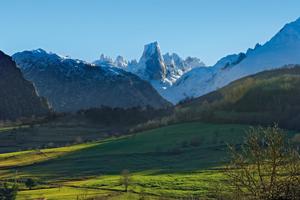
Whoever comes to Asturias for the first time, without having read or heard anything about it, instantlygets two surprises:first, that it is a place steeped in history and tradition; and second, that it is inhabited by a people with a unique, friendly nature.
Over a thousand years ago, amid high limestone peaks, green mountains, lush forests, mighty rivers, lakes, springs, waterfalls, orchards, high mountain meadows and vast grazing lands... a kingdom emerged that had thirteen kings, the first of whom was Pelayo, whose memory is especially preserved at the Royal Site of Covadonga in Cangas de Onís.The last was Alfonso III, known as The Great, and for nearly one hundred and fifty years in between the two, a great deal of history –battles included– which was to be decisive in the social and geographical evolution of the Iberian Peninsula as well asthat of present day Spain.Asturias was the first Christian kingdom of this European peninsula and many traces remain of that ancient kingdom –the most prominent among which is Asturian Art, also known as Pre-Romanesque Art, declared World Heritage by UNESCO. There have likewise endured numerous reminders of the nobility and lineage that runs through the bowels of this land, which, since the 14th century, also comprises a Principality, the region most closely linked to the Spanish monarchy since those ancient times right up to the present day.
And between the 14th and 20th centuries, so much history…a historyof a beautiful, yet forceful rural Asturias, which lives on today; of the development of three cities -Oviedo (the capital), Gijón and Avilés; of almost twenty fishing towns and numerous historic towns and villages; of over 200 beaches and a well-preserved coast; of rich industrial heritage, the result of technological and manufacturing prosperity;of 6 Biosphere Reserves;of 5 World Heritage Caves; of a rich cuisine that makes the region, among other features, the leading cheese-producing area in Europe… and much, much more.A veritable Natural Paradise!

Asturias in figures
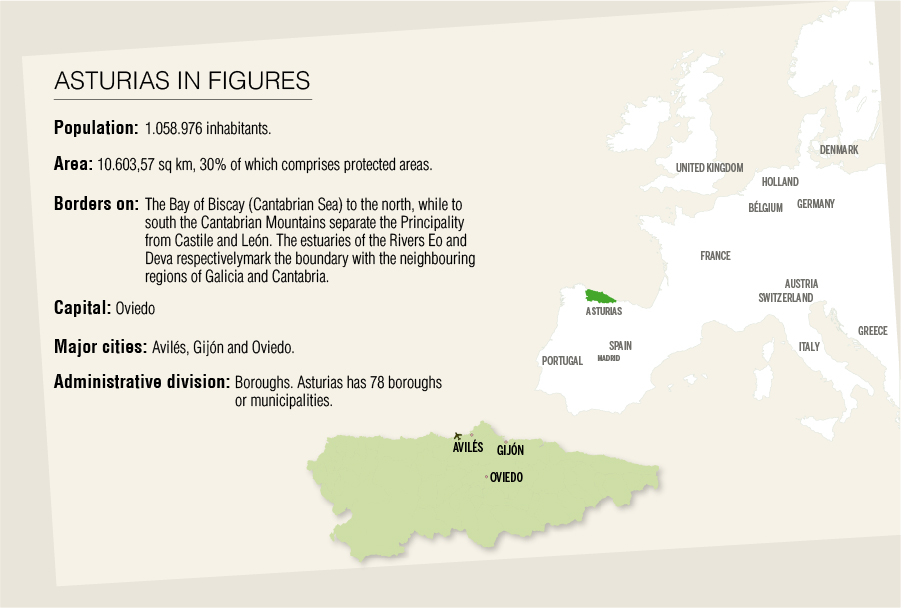

Only in Asturias
Only in Asturias sets out fourteen very different thematic proposals, whose only common link is that each and every one of them can only be carried out in Asturias, which has features and possibilities that are different from other destinations, including those close by. These are completely exclusive options.
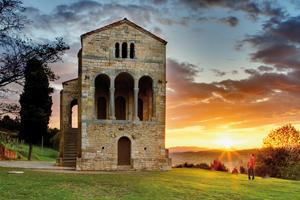 A paradise with unique art
A paradise with unique art
Asturias is a paradise with unique art, So, the Palaeolithic cave art of this region indicates not just the existence of inhabitants but the spirit of improvement of warm, affable and sensitive people, which inspired a unique art, through paintings and engravings made thousands of years ago, and whose evidence in five Asturian caves has been recognised by the UNESCO as a World heritage. The unique art of Asturias has another of its benchmarks in pre-Romanesque art, also known as Asturian Art - that which emerged with the Asturian monarchy -, and also recognised by the UNESCO. |
 The asturian king who Created the Way of St James
The asturian king who Created the Way of St James
The medieval chroniclers reported that back in the 9th century the king Alfonso II The Chaste decided to leave his court, in Oviedo, to visit the tomb of Saint James. Alfonso II little imagined the scope and significance of that decision, which made him the first pilgrim in history to travel to Santiago de Compostela, creating a path of spiritual devotion that reached Europe and has continued until today: the Camino Primitivo, which begins in Oviedo and stretches to the western boundaries of the region. |
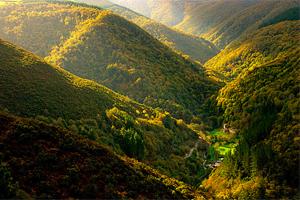 Unforgettable journey to the heart of the Biosphere
Unforgettable journey to the heart of the Biosphere
Asturias is a Natural Paradise. This has been its slogan since 1986, that with which tourists identify it, and of which the Asturians feel proud. The renowned Natural Paradise is a reality as can be proved by the numbers: a third of Asturias's territory is environmentally protected. For this reason the traveller encounters beautiful untouched landscapes, among which stand out six gems, the six biosphere reserves recognised by the UNESCO. |
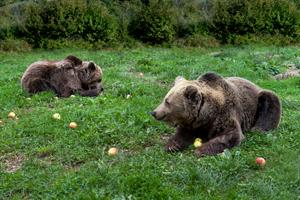 An ideal habitat for protected species
An ideal habitat for protected species
Protected by the rugged Asturian mountains, species of wild animals survive, which, until recently, were in danger of extinction. Outstanding among them are the brown bear and the capercaillie. The deep beech woods of the southwest and the dense oak woods - in the case of the bears -, and the meadows of the Alto Nalón - in the case of the capercaillies – are the natural habitat of these species. |
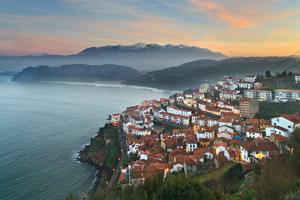 A model coast
A model coast
The Asturian coast is one of the best preserved in the whole of Spain. So much so that its purity makes the cliffs, the level green coastline and the beaches a perfect refuge for those who like untouched nature. In addition, their fishing villages – totalling almost twenty along the three hundred and forty-five kilometres of coast -, have grown, adopting impossible shapes, on hillsides which shelter the ports, and even remember the days when they were whaling docks, landing points for kings and a shelter from storms. |
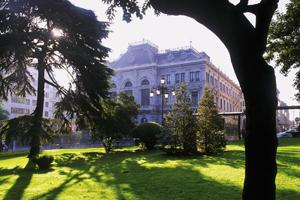 An attractive metropolitan area
An attractive metropolitan area
A gift for the traveller in central Asturias, three cities: Oviedo - the capital of Asturias -, Gijón and Avilés, equidistant from each other and well communicated. Together they make up a first-class cultural, tourist and commercial area, with many inducements for leisure and with the charm of the Asturian rural countryside nearby. |
 Made in Asturias
Made in Asturias
Made in Asturias or, as it is said in Asturian, ‘fecho n'Asturies' has a close connection with traditional trades. A connection, both in the field of art and the most innovative and creative crafts, that drink from traditional sources, as in the field of ethnography, where the horreos (raised granaries), cabazos, teitos and other typical constructions appear as a mixture of ingenuity, survival, adaptation to the environment and human creativity that, even today, generates surprise and interest among the more sensitive travellers. |
 An architectural heritage that combines tradition and innovation
An architectural heritage that combines tradition and innovation
Asturias preserves its civil and religious architectural heritage and its industrial heritage while combining them with innovation. Laboral Ciudad de la Cultura, in Gijón; the Centro Niemeyer in Avilés; and the Palacio de Exposiciones y Congresos in Oviedo (the work of Santiago Calatrava), are examples of this conciliatory spirit of the Asturians, who have known how to promote the best of their past and integrate it into modernity. |
 The kingdom of coal and steel
The kingdom of coal and steel
Asturias, an ancient Iberian kingdom, had, since its genesis, a privileged core that enabled humanity to survive the last great ice age. Since then, the sap of the subsoil has been coveted in all ages and cultural stages, from the Romans until now. In the Industrial Revolution, its geological wealth converted the region into a real coal and steel kingdom, an historical moment which has left an impressive intellectual and social hereditary legacy. The industrial heritage of Asturias has passed, but it is present. |
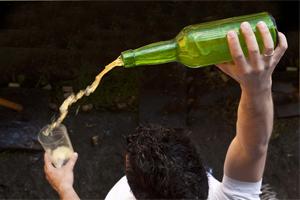 The only cider in the world that is poured
The only cider in the world that is poured
In the year 60BC, Estrabon, the Greek raveller and writer, cited cider without ever having tried it. Today this would almost be a sacrilege. In the juice of the apple, the Asturians have not just their local drink, but also a cultural element that forms part of their way of seeing life, an umbrella beneath which territories are joined together, and even a sign of identity. The sensation of pouring cider, for example, is a unique experience, which is experienced in a special way in Asturias because it is the only cider making region in which this playful-gastronomic ‘ritual' is carried out. |
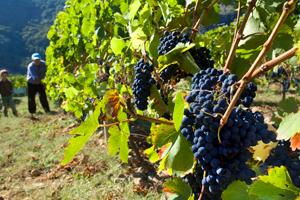 Heroic viticulture of medieval origin
Heroic viticulture of medieval origin
When we head towards southwest Asturias we encounter a surprisingly different landscape. Mountains rising to infinity and winding roads racing towards their shelter, where their tiers appear and we get our first impression of that heroic mountain viticulture that is practiced in Asturias and which constitutes a unique spectacle. They may look like simple terraces capriciously won from the abyss, but you just have to sharpen your gaze to see in their soil the vineyards that stand up proudly, obvious proof that we have entered wine country. |
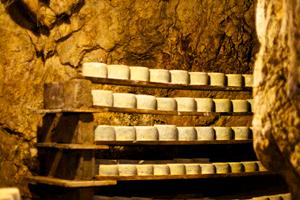 The great cantabrian pantry
The great cantabrian pantry
If Asturias is a paradise for the senses, you will never forget the sense of taste. In this region the cult of the palate can be perceived by the fact that practically everything is celebrated, commemorated, remembered or enjoyed around a table covered with a tablecloth. The green Asturian terrain is a symbol of fertility, food from a rich fertile land and pasture for cattle producing their famous meat and milk. More than three hundred kilometres of coastline and some of the best Cantabrian ports guarantee excellent fish and shellfish cuisine. It can be said, therefore, that Asturias is a true natural pantry. |
